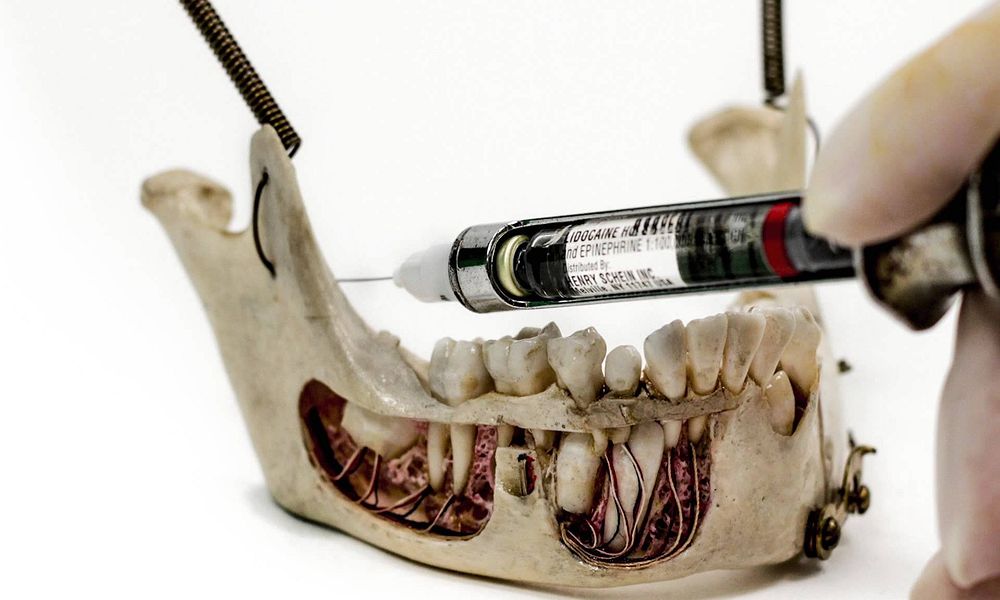Riga-Fede ulcer is a rare traumatic lesion in infants, commonly associated with natal or neonatal teeth. Management depends on the severity of the lesion and the type of tooth involved.
📌 Recommended Article :
PDF 🔽 Oral cysts in newborns: Characteristics, diagnosis and treatment ... Diagnosis and treatment is necessary to prevent alterations from intervening in normal functions such as complex sucking, swallowing and phonation.This article reviews updated evidence on clinical and surgical approaches, providing practical guidelines for dental professionals.
Advertisement
✅ Introduction
Riga-Fede ulcer is a chronic ulcerative lesion of the oral mucosa, usually located on the ventral surface of the tongue, caused by repetitive trauma from natal or neonatal teeth. Its prevalence ranges from 1:1000 to 1:6000 live births (Sarkar et al., 2020). Because of its impact on feeding and the risk of aspiration, early diagnosis and appropriate management are essential in pediatric dental practice.
📌 Recommended Article :
PDF/Video 🔽 Characteristics, diagnosis and treatment of common oral disorders in newborns ... Health professionals must know and recognize the characteristics of the different lesions that newborns present in the oral cavity so that they can adequately advise parents.✅ Etiology
° Mechanical trauma caused by natal/neonatal teeth.
° Repetitive tongue movements during breastfeeding.
° Association with systemic or neurological conditions (e.g., Down syndrome, cerebral palsy).
✅ Diagnosis
° Painful ulcerated lesion on the ventral tongue surface.
° Presence of natal/neonatal tooth with sharp incisal edges.
° History of feeding difficulties or irritability.
📌 Recommended Article :
PDF 🔽 Epstein's pearls and Bohn's nodules: definition, characteristics and case report ... Bohn's nodules and Epstein's pearls are benign cysts found in the oral cavity of a newborn. They are observed as small lumps that are distributed in the oral cavity and disappear over time.✅ Treatment Options
1. Clinical Management
° Selective grinding of incisal edges to reduce trauma.
° Protective resin coverage over sharp tooth surfaces.
° Use of silicone intraoral protectors in mild cases.
° Pain control with age-appropriate analgesics.
° Regular follow-up to ensure healing.
2. Surgical Management
° Extraction of the natal or neonatal tooth in cases of severe mobility (risk of aspiration), persistent pain, or failure of conservative management.
° Simple procedure usually performed under local anesthesia with close postoperative monitoring.
📌 Recommended Article :
PDF 🔽 Molar incisor hypomineralisation: Definition, diagnosis and clinical management ... Molar incisor hypomineralization is a development defect of dental enamel, and affects the aesthetics of the tooth and generates sensitivity and a high degree of enamel fracture, in addition to a high risk of caries.💬 Discussion
The choice of treatment should be individualized. If the natal or neonatal tooth is stable, conservative management such as grinding or protective restorations is recommended, aiming to preserve the tooth for future function and aesthetics. However, if the tooth is highly mobile, causes severe pain, or poses a risk of aspiration, extraction is the safest option.
Multidisciplinary collaboration between pediatricians and pediatric dentists is essential to ensure proper nutrition and prevent complications.
✍️ Conclusion
Riga-Fede ulcer management depends on the severity of the lesion and the tooth characteristics. Conservative management should always be the first choice, while extraction is indicated in high-risk cases. Early diagnosis and timely treatment improve the infant’s quality of life and prevent complications.
📊 Comparative Table: Summary of Riga-Fede Ulcer Management
| Aspect | Advantages | Limitations |
|---|---|---|
| Early diagnosis | Prevents complications, enables conservative management | Requires clinical expertise, may be confused with other lesions |
| Clinical management (grinding, resin, protectors) | Preserves the tooth, avoids premature loss, non-invasive approach | Requires follow-up, recurrence possible if trauma persists |
| Surgical management (extraction) | Definitive solution, eliminates aspiration risk | Premature tooth loss, may affect future dental development |
| Recommendations | Individualized treatment, conservative approach preferred | Extraction may be unavoidable in severe cases |
| Conclusion | Prevents complications, improves infant’s quality of life | Success depends on early diagnosis and multidisciplinary care |
📝 References
✔ Cunha, R. F., Boer, F. A., Torriani, D. D., & Frossard, W. T. (2019). Natal and neonatal teeth: review of the literature. Pediatric Dentistry, 41(3), 204–208.
✔ Sarkar, S., Chandra, S., & Singhal, P. (2020). Riga-Fede disease associated with natal teeth: A case report and review. Journal of Indian Society of Pedodontics and Preventive Dentistry, 38(1), 101–104. https://doi.org/10.4103/JISPPD.JISPPD_181_19
✔ Folayan, M. O., & Sowole, C. A. (2021). Management of Riga-Fede disease: Case reports and literature review. Clinical Case Reports, 9(3), 1542–1546. https://doi.org/10.1002/ccr3.3709
✔ Gonçalves, F. A., de Souza, I. P. R., & Maia, L. C. (2022). Riga-Fede disease: Update on clinical management and review of the literature. European Archives of Paediatric Dentistry, 23(4), 657–664. https://doi.org/10.1007/s40368-022-00732-3
📌 More Recommended Items
► Webinar: Frequent oral pathologies in the newborn - Diagnosis and treatment (cysts, infections, tumors)
► Hereditary Gingival Fibromatosis in a pediatric patient - Characteristics and treatment
► Natal teeth and Riga Fede ulcer: Diagnosis and treatment









